NVIDIA Launches GeForce RTX 5060 Ti: Blackwell Architecture Comes to the Masses
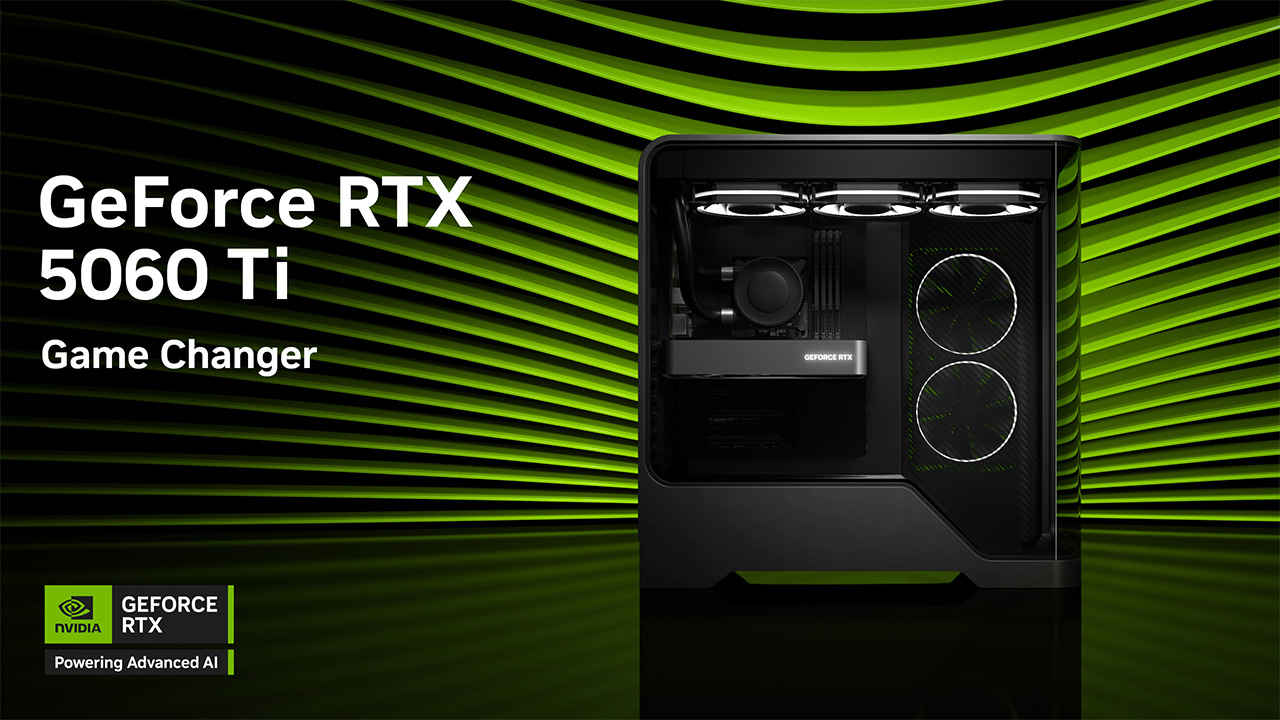
NVIDIA has officially unveiled the GeForce RTX 5060 Ti, the first card in its 60-class RTX 50 GPU family based on the Blackwell architecture. Designed to bring next-generation features like DLSS 4, Multi Frame Generation, and enhanced ray tracing capabilities to a wider audience, the RTX 5060 Ti aims to be the go-to upgrade for gamers still on older GPUs like the RTX 2060 or GTX 1660. This marks the beginning of the rollout for the RTX 5060 series, with the RTX 5060 Ti becoming available from April 16th, followed by the base RTX 5060 model and laptop variants in May.
NVIDIA RTX 5060 Ti – The GPU for the masses
The RTX 5060 Ti brings the Blackwell GPU architecture’s advanced capabilities to the mid-range market. Built with 4th generation Ray Tracing Cores and 5th generation Tensor Cores, the RTX 5060 Ti claims to deliver significant gains in both fidelity and performance, especially in games that support DLSS 4.
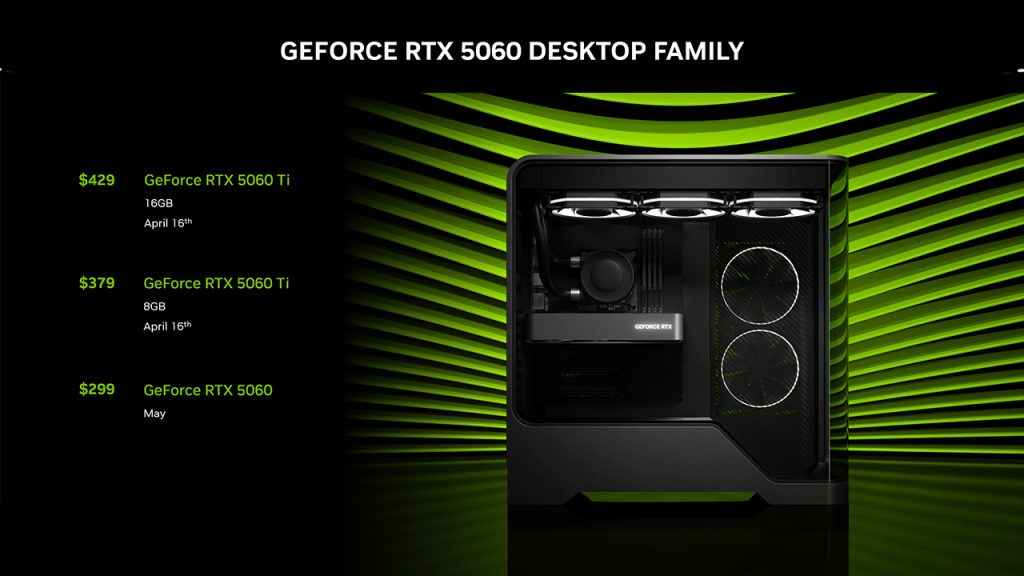
Two configurations of the card are launching—an 8GB GDDR7 variant priced at $379, and a 16GB version at $429. Both use a 128-bit memory interface and come equipped with 4608 CUDA cores, operating at a base clock of 2.41 GHz and boosting up to 2.57 GHz.
Factory-overclocked and standard models will be available from board partners including ASUS, MSI, GIGABYTE, ZOTAC, Palit, INNO3D, and PNY.
DLSS 4 and Neural Rendering Take Centre Stage
Central to the RTX 5060 Ti is NVIDIA’s new DLSS 4 technology, which combines a transformer-based AI model with new rendering techniques like Multi Frame Generation, Ray Reconstruction, and DLSS Super Resolution. These neural rendering features can multiply frame rates by up to 8x compared to traditional rendering.
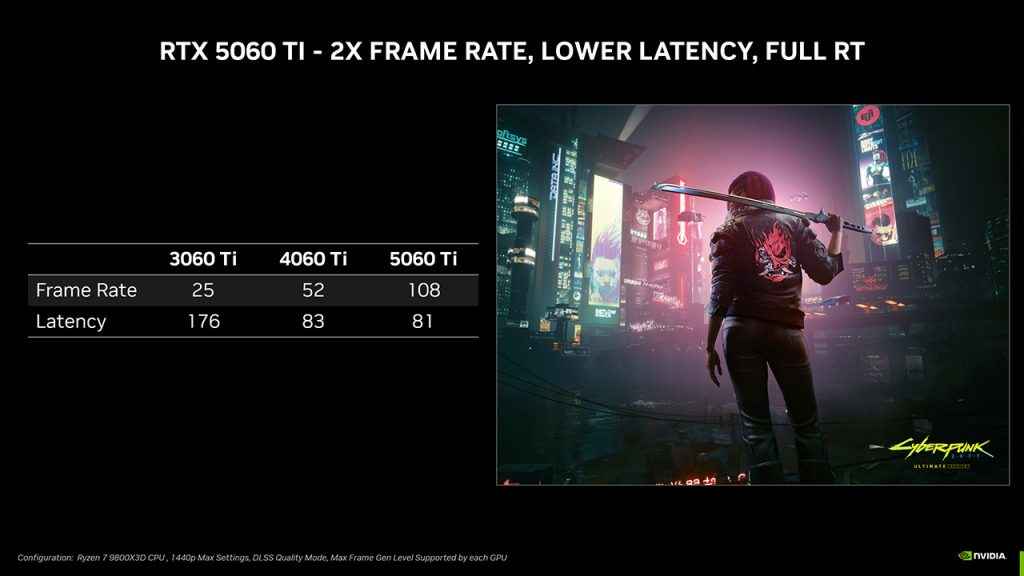
In games like Hogwarts Legacy, users can expect improved image clarity, enhanced motion stability, and reduced input latency thanks to NVIDIA Reflex, which is now available in over 130 games. The card is said to offer double the frame rates when Multi Frame Generation is switched on compared to the RTX 4060 Ti in supported titles, while also cutting down latency to deliver a smoother and more responsive experience. Unfortunately, raster performance might not have improved significantly compared to the previous generation.
Even in titles that don’t yet support Multi Frame Generation, the card supposedly delivers performance gains of around 20% compared to the previous generation, particularly in graphically intensive games such as A Plague Tale: Requiem and Delta Force.
RTX 5060 Ti Specifications
NVIDIA claims that there are over 50 million GeForce gamers still using older 60-class and 50-class GPUs. For these users, the RTX 5060 Ti offers an appealing jump not only in raw performance but also in feature set. DLSS 4, real-time ray tracing, AV1 encode/decode, and faster video rendering make it an all-round upgrade not just for gaming but also for content creation and streaming.
The card supports both NVIDIA’s Game Ready and Studio Drivers, giving users flexibility depending on whether their focus is gaming or creative workflows.
| RTX 5060 Ti 8GB / 16GB | |
| Architecture | NVIDIA Blackwell |
| CUDA Cores | 4608 |
| Tensor Cores | 5th Gen, 759 AI TOPS |
| Ray Tracing Cores | 4th Gen, 72 TFLOPS |
| Base / Boost Clock | 2.41 GHz / 2.57 GHz |
| Memory | 8GB or 16GB GDDR7 |
| Memory Bus | 128-bit |
| Display Support | Up to 4K@480Hz or 8K@165Hz (DSC) |
| Display Outputs | 3x DisplayPort 2.1, 1x HDMI |
| Power Consumption | 180W |
| System Power Recommendation | 600W |
| Power Connector | 1x PCIe Gen 5 (adapter included) |
| PCIe Support | Gen 5 |
| Max GPU Temperature | 87°C |
The RTX 5060 Ti supports DisplayPort 2.1 with UHBR20 bandwidth and HDMI, enabling high refresh rate gaming at 4K and beyond. It also includes support for AV1 hardware encode and decode, NVIDIA Reflex, Broadcast, G-SYNC, and more.
Availability and Variants
The GeForce RTX 5060 Ti will be available globally starting April 16th. Custom designs from NVIDIA’s add-in board partners will vary in size, cooling solution, and factory overclocking, offering a range of SKUs to match different builds and budgets.
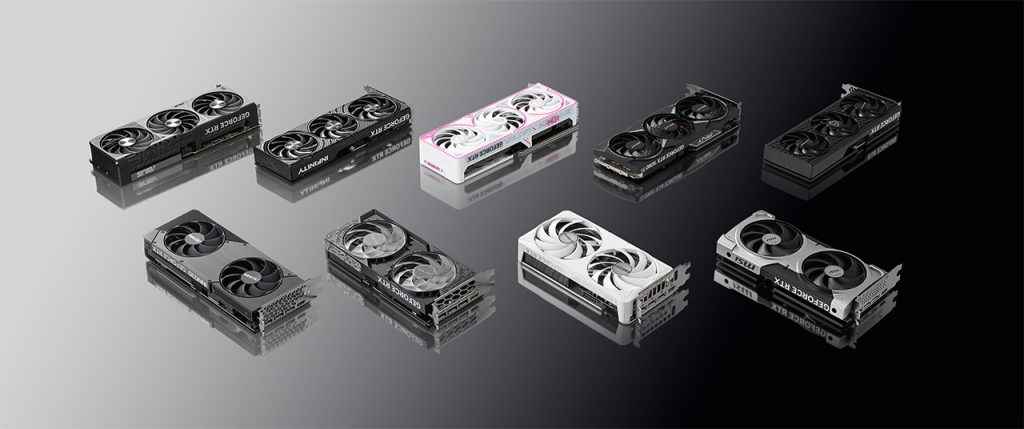
The 16GB variant is expected to appeal to those who play at higher resolutions or with larger texture packs and mods, while the 8GB option will likely be sufficient for 1080p and entry-level 1440p gaming.
RTX 5060 and Laptop Models
Following the RTX 5060 Ti, NVIDIA will launch the base RTX 5060 desktop GPU in May, starting at $299. Featuring 3840 CUDA cores and 8GB of GDDR7 memory, it shares the same DLSS 4 and Blackwell core technologies as its Ti sibling. NVIDIA promises 100+ FPS at 1080p with ray tracing in major titles and even greater benefits in eSports games.
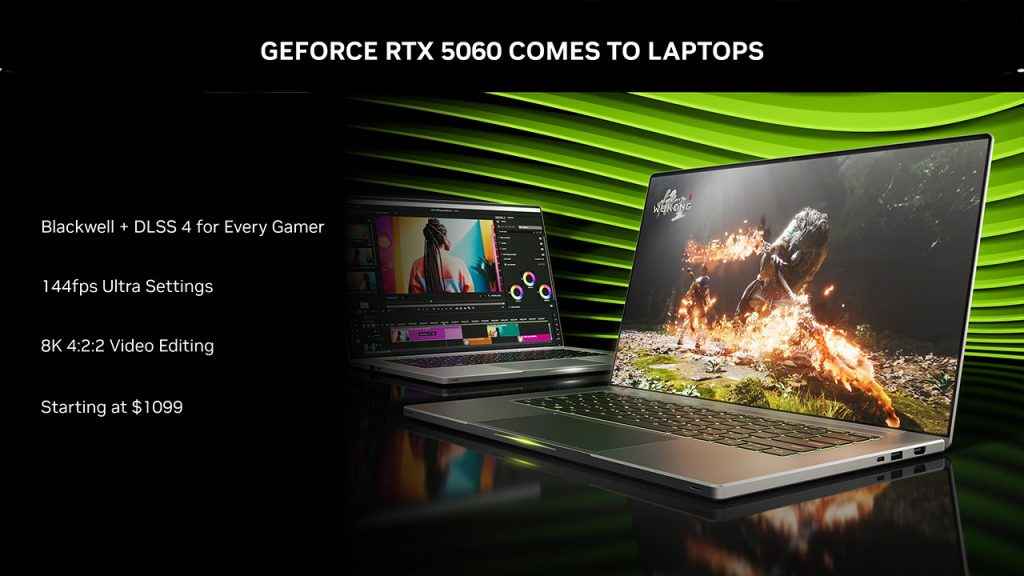
Simultaneously, GeForce RTX 5060 laptops will debut at prices starting from $1099. These models promise over 2x the performance of their predecessors, pushing 100 FPS in ray-traced titles and over 300 FPS in competitive games. Thanks to Max-Q optimisations, laptops with the RTX 5060 will be available in ultra-thin designs, as slim as 14.9mm.
Mithun Mohandas
Mithun Mohandas is an Indian technology journalist with 10 years of experience covering consumer technology. He is currently employed at Digit in the capacity of a Managing Editor. Mithun has a background in Computer Engineering and was an active member of the IEEE during his college days. He has a penchant for digging deep into unravelling what makes a device tick. If there's a transistor in it, Mithun's probably going to rip it apart till he finds it. At Digit, he covers processors, graphics cards, storage media, displays and networking devices aside from anything developer related. As an avid PC gamer, he prefers RTS and FPS titles, and can be quite competitive in a race to the finish line. He only gets consoles for the exclusives. He can be seen playing Valorant, World of Tanks, HITMAN and the occasional Age of Empires or being the voice behind hundreds of Digit videos. View Full Profile




